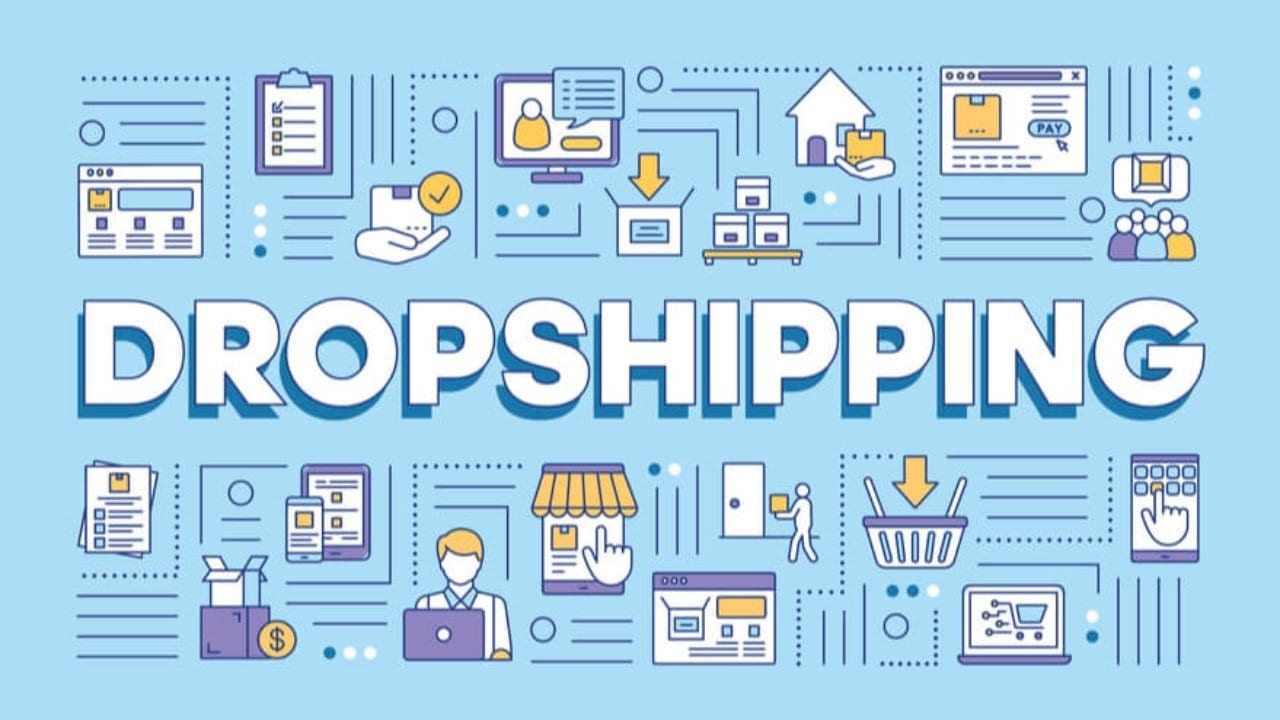Unlock Success with Dropshipping: 13 Expert Strategies for Profitable Ventures
Unlock Success with Dropshipping: 13 Expert Strategies for Profitable Ventures
Embarking on a dropshipping venture can be both exhilarating and daunting. The concept of running an online store without the hassle of inventory management sounds appealing, yet success in this field requires strategic planning and execution.
1. Understanding Dropshipping
Dropshipping, a business model wherein the retailer doesn't stock products but instead relies on third-party suppliers to fulfill customer orders, has gained immense popularity in recent years.
This section provides a detailed overview of how dropshipping works and its advantages for aspiring entrepreneurs.
Dropshipping streamlines the e-commerce process, allowing entrepreneurs to focus on marketing and customer engagement without the burden of inventory management.
By leveraging this model, businesses can minimize upfront costs and operational complexities, making it an attractive option for startups and seasoned entrepreneurs alike.
2. Choosing Profitable Niches
Selecting the right niche is paramount for dropshipping success. In this section, we explore effective strategies for identifying lucrative niches and conducting market research to validate their potential.
Successful dropshipping ventures often revolve around niche products with high demand and low competition. By leveraging tools such as Google Trends and niche research platforms, entrepreneurs can uncover untapped markets and capitalize on emerging trends, setting the stage for sustainable growth.
3. Building a Robust Supplier Network
Establishing strong partnerships with reliable suppliers is crucial for seamless order fulfillment and customer satisfaction.
This section delves into the process of vetting suppliers and forging mutually beneficial relationships.
When sourcing suppliers for your dropshipping business, prioritize factors such as product quality, reliability, and shipping times.
Conduct thorough due diligence, request samples, and communicate transparently to ensure alignment on pricing, terms, and expectations.
4. Optimizing Product Listings
Compelling product listings are essential for attracting customers and driving conversions in the competitive e-commerce landscape.
This section explores best practices for optimizing product titles, descriptions, and images to maximize visibility and sales.
Craft engaging product descriptions that highlight key features, benefits, and unique selling points. Utilize high-quality images and videos to showcase products from multiple angles, providing customers with a comprehensive understanding of what to expect.
5. Implementing Effective Marketing Strategies
Marketing plays a pivotal role in driving traffic and generating sales for dropshipping businesses.
We explore various digital marketing channels and tactics to promote your store and attract potential customers.
From search engine optimization (SEO) and social media marketing to email campaigns and influencer partnerships, there are myriad ways to amplify your dropshipping business's online presence.
Tailor your marketing strategies to resonate with your target audience and differentiate your brand in a crowded marketplace.
6. Providing Exceptional Customer Service
Delivering exceptional customer service is paramount for building trust and fostering long-term relationships with your audience.
This section outlines strategies for providing prompt, personalized support and addressing customer inquiries and concerns effectively.
Invest in responsive customer service channels, such as live chat, email, and social media, to ensure timely assistance for your customers.
Prioritize transparency, honesty, and empathy in your interactions, aiming to exceed expectations and cultivate brand loyalty.
7. Managing Inventory and Fulfillment
Efficient inventory management and order fulfillment are critical for sustaining operations and meeting customer expectations.
This section offers insights into inventory tracking tools, order processing systems, and logistics solutions to streamline your supply chain.
Implement inventory management software to track stock levels, monitor product performance, and automate reorder processes.
Explore fulfillment options, such as third-party logistics (3PL) providers and dropshipping platforms, to optimize order fulfillment and minimize shipping times.
8. Analyzing Performance Metrics
Data-driven decision-making is essential for optimizing your dropshipping business and driving continuous improvement.
This section examines key performance indicators (KPIs) and analytics tools to monitor and evaluate your store's performance effectively.
Track metrics such as conversion rate, average order value, and customer acquisition cost to gauge the effectiveness of your marketing campaigns and identify areas for optimization.
Leverage analytics platforms like Google Analytics and Shopify Insights to gain actionable insights and refine your strategies accordingly.
9. Adapting to Market Trends
The e-commerce landscape is dynamic, with consumer preferences and market trends evolving rapidly.
This section explores the importance of staying abreast of industry trends and adapting your dropshipping strategy accordingly to remain competitive.
Monitor market trends, consumer behavior, and competitor activities to identify emerging opportunities and pivot your strategy as needed. Embrace innovation, experimentation, and continuous learning to stay ahead of the curve and position your dropshipping business for long-term success.
10. Navigating Challenges and Risks
While dropshipping offers numerous benefits, it also presents inherent challenges and risks that entrepreneurs must navigate effectively.
This section addresses common pitfalls and strategies for mitigating risks in the dropshipping business model.
From supplier issues and inventory management challenges to shipping delays and customer disputes, anticipate potential hurdles and develop contingency plans to address them proactively.
Cultivate resilience, adaptability, and a problem-solving mindset to overcome obstacles and thrive in the competitive e-commerce landscape.
11. Scaling Your Dropshipping Business
Scaling your dropshipping business requires strategic planning, investment, and scalability.
This section explores tactics for scaling operations, expanding your product catalog, and diversifying revenue streams to achieve sustainable growth.
Explore opportunities for automation, outsourcing, and process optimization to streamline operations and free up resources for expansion.
Invest in marketing, technology, and infrastructure to support increased demand and capitalize on growth opportunities in your niche market.
12. Ensuring Legal Compliance
Compliance with applicable laws and regulations is essential for the long-term viability and reputation of your dropshipping business.
This section highlights legal considerations and best practices for ensuring compliance with consumer protection, tax, and intellectual property laws.
Consult legal professionals or industry experts to ensure your dropshipping business adheres to relevant regulations and standards.
Maintain transparency, integrity, and ethical business practices to build trust with customers and safeguard your brand reputation.
13. Future Trends and Opportunities
The future of dropshipping holds immense potential for innovation, disruption, and growth.
This section explores emerging trends and opportunities shaping the e-commerce landscape and offers insights into future developments that could impact the dropshipping industry.
From advancements in technology, such as artificial intelligence and augmented reality, to shifts in consumer behavior and market dynamics, stay attuned to evolving trends and seize opportunities to position your dropshipping business for success in the digital age.
Why Choose Shopify for Dropshipping?
User-Friendly Interface: Shopify boasts an intuitive interface that makes setting up your dropshipping store a breeze.
With customizable templates and drag-and-drop functionality, even beginners can create professional-looking storefronts in no time.
Integrated Oberlo App: One of the biggest advantages of Shopify for dropshipping is its seamless integration with Oberlo, a popular app that simplifies product sourcing and order fulfillment.
With Oberlo, you can easily import products from suppliers around the globe and automate the entire fulfillment process.
Robust E-commerce Features: From secure payment gateways and customizable shipping options to inventory management and analytics tools, Shopify offers a comprehensive suite of e-commerce features to streamline your dropshipping operations.
Scalability: Whether you're just starting out or aiming to scale your dropshipping business to new heights, Shopify provides the scalability and flexibility you need. With tiered pricing plans and an extensive app marketplace, you can tailor your store's functionality to suit your evolving needs.
24/7 Customer Support: Should you encounter any challenges or have questions along the way, Shopify's dedicated support team is available 24/7 to provide assistance and guidance, ensuring a smooth and hassle-free experience.
Conclusion
When it comes to launching a successful dropshipping venture, choosing the right platform is paramount. With its user-friendly interface, integrated Oberlo app, robust e-commerce features, scalability, and excellent customer support, Shopify emerges as the top choice for aspiring dropshippers looking to turn their entrepreneurial dreams into reality.
FAQs
Q: What is dropshipping, and how does it work? Dropshipping is a business model wherein the retailer doesn't stock products but instead relies on third-party suppliers to fulfill customer orders.
When a customer places an order, the retailer forwards it to the supplier, who then ships the product directly to the customer.
Q: How do I choose a profitable niche for dropshipping? To choose a profitable niche for dropshipping, conduct thorough market research to identify products with high demand and low competition. Utilize tools like Google Trends and niche research.






















Post a Comment